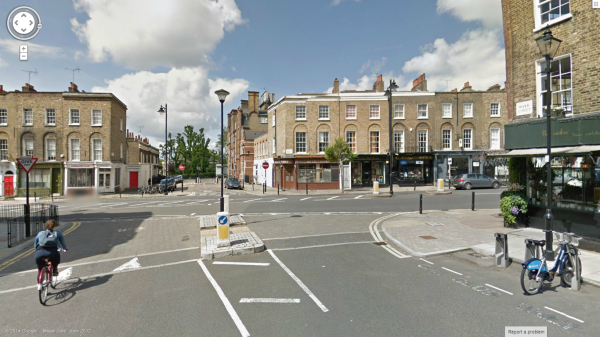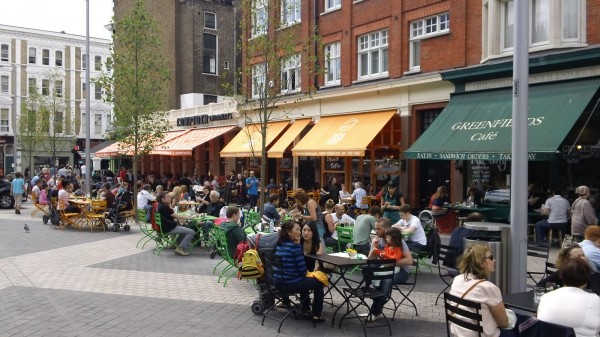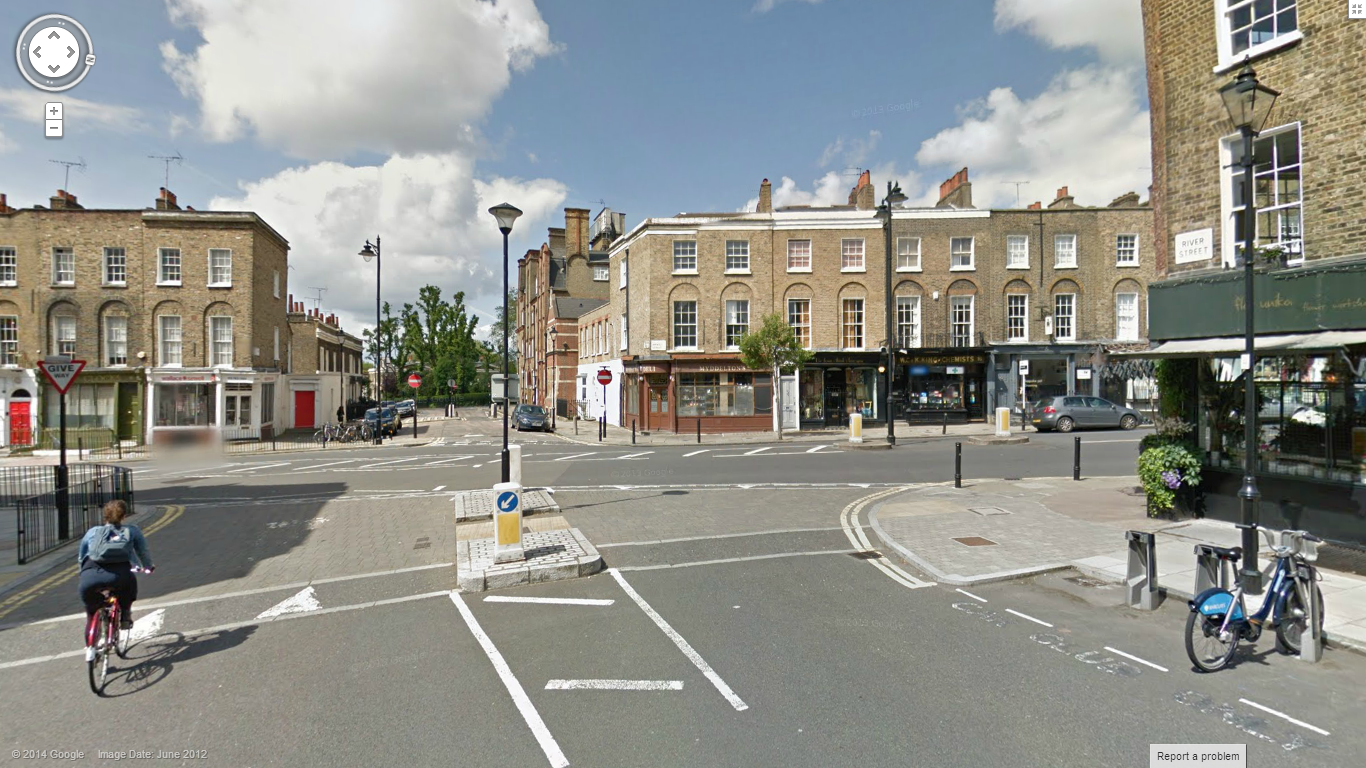UPDATE
The consultation for the Quietway Route from Bloomsbury to Walthomstow is now live and can be found here
ICAG have had a number of meetings with the council to discuss the plans.
There are some big improvements planned, such as improving Owen St by City and Islington college.
But unfortunately, as it was a pilot route, the council didn’t have the time to develop the more ambitious proposals we feel are needed, such as removing rat running motor vehicles.
The primary benefit of the works will be upgraded signage and improved visibility at some junctions by moving parking.
We would really encourage you to respond to the consultation and request they make the more substantial changes needed for safe cycling when future funding becomes available (eg with the next round of quietways).
If you live near the route, and would like to help get more improvements, please get in touch with tom(at)icag.org.uk
We would particularly like to hear from people who currently don’t cycle to get their views on the current conditions, so do send them our way.
Getting the Quietways underway for a more liveable Islington

Those of you who were at our ICAG meeting with Andrew Gilligan, or heard him speak at the end of the London Cycling Campaign’s Big Ride last month will be eagerly awaiting a new network of quiet routes. Aimed to attract a more comfortable, less lycra intensive cycle style across the capital.
As the grapevine buzzes with speculation about what we can expect from these “quietways”, we wanted to share what we know so far in order to start a discussion around what changes we want to see to attract “inclusive cycling” and ensure the proposals benefit all residents, whether or not they are regular cyclists.
Before diving into the detail, it’s worth bearing in mind a few extra principles:
- Transport planning like this poses a wonderful opportunity to add value to the wider public realm than just being cycle friendly: by re-routing traffic, we can make streets quieter, create public spaces in the heart of residential areas, reduce pollution. With the right measures, streets can become nicer for everyone, especially local residents, cafes, pubs, and shops. In short, with the right imagination, these schemes aren’t just for cyclists, but promise to create more liveable streets for all Islingtonians.
- It would be good if we can get to the route: far more people can benefit if the “quiet” route can be comfortably accessed by streets not directly on the route. We therefore need to think not just about the route itself, but the area surrounding it too – often known in the jargon as a “cell.”
- We, as members of The London Cycling Campaign recognise that for a cycle route to be adequate it needs to be separated from other traffic, either by kerb segregation, or by reducing the amount of traffic on streets.
So, what’s the plan so far?
There are two routes that we expect to be developed first. The first, currently called “Quietway 38” is set to run between Southgate Rd/Northchurch St in the east to Calthorpe St in the west.The second, (as yet untitled) will go between Finsbury Square and up through Penton St.
No detailed plans have emerged so far, but initial suggestions from the council were for
- traffic signal alterations
- traffic management improvements
- cycle facility upgrades
- surface repairs
- cycle contraflow lanes
A map of the the first route is below:
View Quietway Route 38 in Islington in a larger map
We’ve colour coded where we think the priorities are for changes to make the routes acceptable.
- Red shows streets which dont need any change.
- Light Blue denotes the route is pretty good but could be better.
- Dark blue shows where there is currently too much traffic and changes are required.
- Green highlights where other desire lines or planned routes intersect Quietway 38, such as on Amwell St for the route from Finsbury Square.
Since there probably isn’t the space to install segregated tracks, a few strategic “filters” or planters to close through traffic would be all that is needed make a much more pleasant walking and cycling environment. This approach is tried and tested already along the route, helping De Beauvoir to be one of the most pleasant places to live and travel through in London.
For more detail on what changes we suggest are made, click on the link for the larger map. If you agree or disagree , please get in touch and join the debate.
Two really exciting, innovative changes for us are the potential to create public squares in the heart of both Amwell and St Peters. By installing cheap bollards, “pocket plazas” can quickly appear, as recently occurred in Exhibition Row (pictured below). What’s more, done correctly, traffic does not need to be pushed onto other residential roads.

Best of all for Islington Council, are proposals are incredibly cheap: TfL have allocated £1m/mile for the quietway network, which works out at £1.5m for Quietway 38 in Islngton. But our measures would probably cost less than £50,000.


Excellent work.
Let’s define the cells:
1. Finsbury
2. St Peter
3. De Beauvoir, extended West
The principle is that motor traffic cannot drive through the cells (=rat running). If they enter the cell from one side, they need to exit on the same side. If they need to go across, they will have to drive around.
Cheap is not good for this to work proper change is needed and this will cost money.
Hi Sean,
Would be good to hear more of your thoughts: what would you like to see more money spent on? There is some money available so it’s well worth getting the ideas on the table now. Cheers, Tom
I would say there is lots that could done around improving the junctions, on that route ,and providing segregation at the junctions as even on quieter routes these will be the parts where motor traffic causes cyclists the most issues. Mini roundabouts are dangerous for cyclists as motorists do not give way correctly and consistently and are able to drive straight over with little issue. We need to modify these junctions so they force motorist to slow down to make there turns. We should have as much segregation and remove as much parking as possible. We should ensure that we are not making use of any shared use paths with pedestrians as these treat cycling as walking and make it slow and incontinent.
As a group we need to ensure that all we build and promote is good enough for use by 8-80 cyclists of all types. If we fail to do this then cycling in London will continue to be something that just a minority of young men feel safe and able to do. I am very worried about the quietway project as I feel that we are going to end up with winding and indirect routes only slightly higher in quality than the LCN+. We know that the LCN+ did not lead to mass cycling or really any growth in cycling and is often dangerous and slow. My concern is doubled as Sustrans are involved and they have a history of supporting compromised infrastructure. Then we have the LCC group talking about cheap. We should not be trying to come in under budget we should be spending all the money we have available to ensure the route treatments make it a nice a place as possible to cycle.
HI sean, I’m totally with you on the building for 8-80. I probably wasn’t clear enough in the blog, but my solution for the junctions is to in effect close them for all but peds and cyclists. If we can re-create the Culford Rd 4 way closure then we solve the dangers of junctions entirely, don’t you think? What I’m essentially asking for is to remove all through traffic apart from the main roads.
We will of course ask for segregation and removal of parking, but I actually think that closing roads to through traffic is a better strategy for residential streets – in that it is a slightlier easier sell, and it brings further benefits of reduced noise and air pollution. Of course, on roads which can’t close then I’m 100% in favour of protected tracks there.
As for Quietway 38 in particular, the two tricky junctions will be Farringdon St, New North Rd and Southgate Rd. Having all three signalised I think makes most sense – this would in effect give cyclists their on signal phase as the route they are taking would have no motor traffic on due to the modal filters. Hope that makes sense.
The Culford road 4 way closure would be a good solution. I understand that on residential streets a fully protected lane might not be deemed necessary but would still at very least like to see something akin to the Dutch approach http://aseasyasridingabike.files.wordpress.com/2014/04/screen-shot-2014-04-15-at-19-04-36.png . I find that even on residential streets with no through traffic were are plenty of white vans and Tesco/Asda/Waitores deliver trucks buzzing around putting cyclist in danger with close overtakes and aggressive drivers. I think due to how far we are behind with attitude towards cyclists that we in reality need fully segregated infrastructure in more places to achieve the same levels of safety.
I would have though the best way to sell stopping through traffic would be to promote how it will be safer for the children/elderly and stay away from any arguments about being better for cyclists. I tend to find at the first mention of how something is better for cyclists people jump to the defense of the poor old persecuted motorist.
I would agree at any major junction we will need lights and to give cyclists there own phase. The design of this is going to be important and I think its key to stay away from sensors under the road, as they rarely work well, and instead just use a button. Whats going to be key though is ensuring the crossing time is long enough and the wait time is short enough. The biggest problem with cycle only phases tends to be that they are the lowest priory and waits of 30s to 1min are not uncommon. I would also like to avoid Tucan crossings ideally. It would be nice if we could get something innovative like a button that a cyclists can press further up the road (something big and easy to tap) that by the time someone going about 16kph would arrive and the lights already be green (with another button at the lights if people miss it). It would also be nice to get the Danish have with the stands at the lights so people dont need to put a foot down.
That become a bit of a ramble but will try to think of more things that we should try to push for.
Where st. peters st meets colebrooke row should be cycle and pedestrians only it is so narrow that you can barely walk down it, it would reduce rat running somewhat and provide a better access by bike and on foot for students at City of London academy but not sure if that could be done with your four way filter but if I had to choose I would say the filter since the school has a massive cycle park which is completely unused at present due to the amount of traffic past the school mostly black cabs and delivery vans. Good piece!
Hi Michael,
Thanks for your comments. I agree access for City of london academy needs to be way better – its pitiful how empty those bike racks are. I’m not totally set on where the filters go, it would be good to look at the various options.